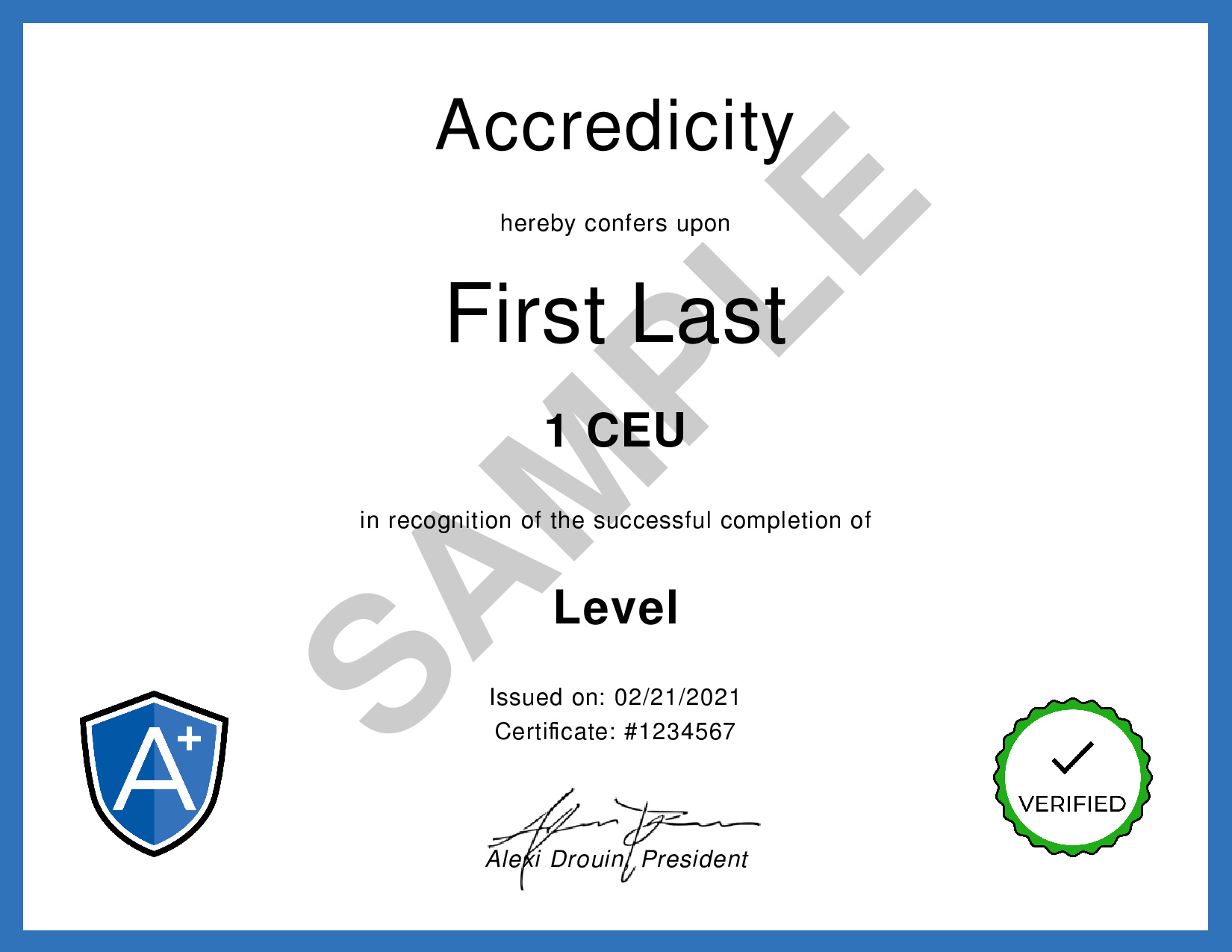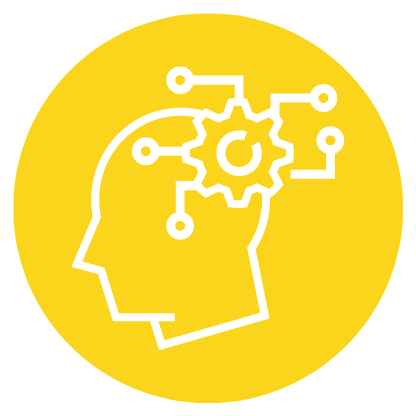Rethinking Thinking – Trevor Maber | TED-Ed
We Make Your Education Count

Get the Credit You Deserve and Become the Most Attractive Job Candidate by Earning and Posting A+ Badges to Your Linkedin Profile.
Sign Up to Get Started at Accredicity
Discover how to use the Ladder of Inference to proactively short-circuit your reactions and create better conclusions and actions.Rethinking thinking is the topic of an informative TED-Ed video by Trevor Maber. This video explains the Ladder of Inference, first proposed by Harvard professor Chris Argyris, as a model for how we interact with the world. Every experience enters the ladder at the bottom, quickly zipping up the ladder in the blink of an eye. The Ladder of Inference is composed of 7 rungs, where raw data is filtered, assumptions and conclusions are drawn, beliefs are adjusted, and actions are taken. This video provides a real-life example of how the Ladder of Inference works, and how understanding this process can help us become more mindful of our own ladders, and help others see theirs. Learning Outline1. Ladder of Inference: a model of the process our brain goes through when we interact with someone. Instructional ContentHave you ever been frustrated at someone cutting you off in traffic or stealing your parking spot? We have all experienced this and often times it can be difficult to manage our emotions in the moment. This is where Trevor Maber’s “Rethinking Thinking” video comes in. It discusses the Ladder of Inference, a model proposed by Harvard professor Chris Argyris, which allows us to understand how our interactions with others can quickly lead to emotional reactions. Through this model, we can realize that every time we interact with someone, the experience enters the ladder at the bottom. The experience quickly zips up the ladder in the blink of an eye, exiting at the top and resulting in emotional reactions. The Ladder of Inference consists of seven rungs, each with a specific purpose. The first rung is the raw data and observations of the experience. The second rung is the filtering of specific information and details from the experience, based on our preferences and tendencies. The third rung is the assigning of meaning to the filtered information, where we start to interpret what our information is telling us. The fourth rung is the development of assumptions based on the meaning we created. The fifth rung is the development of conclusions based on our assumptions. The sixth rung is the adjustment of our beliefs about the world and those involved in the experience. Finally, the seventh and last rung is the taking of action based on our adjusted beliefs. In the video, Trevor Maber takes a real-life example and runs it up the ladder to illustrate how this all works. He explains that in order to manage our emotions, we must be aware of our own ladders of inference. We must ask ourselves what beliefs are at play, where do they come from? What data and observations did we filter in as a result of our beliefs, and why? Are our assumptions valid and supported by facts? Would a different set of assumptions create different feelings and result in new and better conclusions and actions? The “Rethinking Thinking” video provides an invaluable tool for understanding our reactions to everyday experiences. It gives us insight into how we create our own ladders of inference and how they can be used to better manage our emotions. By becoming aware of our ladders, we can gain a better understanding of ourselves and the world around us. Cognition
|

Have you ever been in a situation where someone else "jumped the line" and took something that you felt was rightfully yours? Well, it turns out our brain has a ladder that helps us go from those observations to conclusions and actions. It's like a tiny, microscopic ladder inside our head that helps us make sense of our experiences. Every time something happens, information goes up the ladder of our subconscious and is filtered through our own beliefs and tendencies. We then create meaning from it, form assumptions, and come to conclusions, which then lead to actions. However, instead of just reacting, we can choose to be mindful of the ladder in our head and use it to our advantage. We can ask ourselves questions and use our free will to make better decisions. Quotes1. "We all have our own unique ladder. Be mindful of yours, and help others to see theirs." - Trevor Maber 2. "Next time you notice yourself reacting to your experience, pay focused attention to your ladder." - Trevor Maber 3. "We unknowingly filter based on our preferences, tendencies, and many other aspects that we believe are important." - Trevor Maber Competencies1. Cognitive Flexibility Learning Outcomes1. Analyze: Explain the concept of the Ladder of Inference and the importance of understanding it. Sample Answers1. After watching the video, I learned that the Ladder of Inference is a model that helps explain how our experiences shape our reactions and how we interpret the world around us. It is composed of seven rungs, each one representing a step in the process from raw data to action. 2. By understanding the Ladder of Inference, we can become more aware of our own reactions and beliefs. We can also use the Ladder of Inference to help us better understand other people’s reactions and beliefs. 3. Lastly, I learned that we can use the Ladder of Inference to proactively short-circuit our reactions and beliefs, leading to better conclusions and actions. This can help us build better relationships and create more positive outcomes in our interactions with others. Trevor MaberTrevor Maber is a cognitive scientist with expertise in the psychology of learning, decision making, and creativity. He has a PhD in Psychology from the University of Exeter and has conducted research and published work on the topics of learning, thinking, creativity, and decision making. He is currently a Senior Lecturer in Psychology at the University of Exeter. He is an expert on Rethinking Thinking because of his extensive research on the topics of learning, thinking, creativity, and decision making. He is associated with the University of Exeter and can be found here. Learning DesignCognitive flexibility, open-mindedness, and critical thinking are important competencies for learning because they enable us to make informed decisions, think creatively, and problem-solve in a wide range of contexts. Cognitive flexibility involves the ability to switch between different mental tasks, think in alternative perspectives, and make decisions based on the context. Open-mindedness allows us to consider different ideas and points of view and to be tolerant of diverse opinions. Critical thinking involves the ability to analyze and evaluate information and arguments, to draw accurate conclusions, and to make well-informed decisions. The most effective way to build these competencies is to employ a constructivist approach to learning, which is an approach that emphasizes the active construction of knowledge. Constructivism is based on the idea that learners construct their own understanding of the world through their experiences. This means that learners should be active participants in their own learning, exploring the material and constructing their own meaning with the guidance of the instructor. This approach encourages collaboration, problem-solving, and critical thinking. To help students learn these competencies, the course should incorporate activities that promote cognitive flexibility and open-mindedness. For example, students could be encouraged to think creatively by brainstorming or using mind-mapping tools. They could also be asked to evaluate and discuss different arguments and perspectives in order to develop their open-mindedness. Finally, students should be encouraged to apply their knowledge and skills to real-world problems and to use critical thinking to develop solutions. By engaging in these activities, students will be able to demonstrate a mastery of the competencies and will be better-equipped to apply them in their everyday lives. AssessmentQ: According to the video, the Ladder of Inference is the basis of what model? A. The Cognitive Model Answer: B. The Human Function Model QuestionsCommon Hypothetical Questions: Real-Life Scenario Questions: KeywordsLadder of Inference, "Chris Argyris", "Microscopic-Sized Ladder", "Subconscious Brain", "Raw Data Observations", "Filter Specific Information", "Assign Meaning", "Develop Assumptions", "Develop Conclusions", "Adjust Beliefs", "Take Action Facts1. The Ladder of Inference was first proposed by Harvard professor Chris Argyris. Trends1. Develop an online platform or app where users can practice "short-circuiting" their ladders of inference to practice rethinking their thinking process. SourceThis learning instructional guidance was formulated using the GPT-3 language model created by OpenAI. ShareDo you know the #LadderOfInference? It helps us interpret our experiences, subconsciously assign meaning, and develop assumptions. We can control our reactions by questioning our beliefs and making sure they match the facts. #ChangeYourMindset #LearnSomethingNew 🤔 @Accredicity |








 167 Creds - Cognition
167 Creds - Cognition



